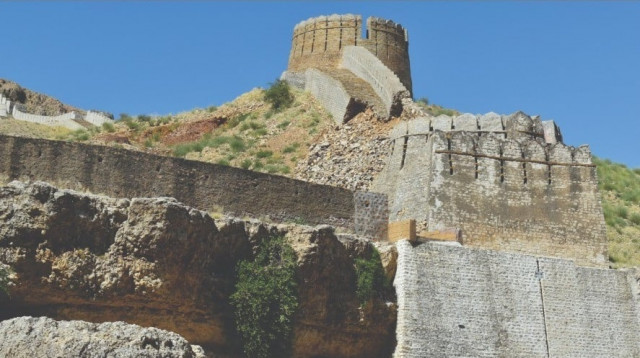Portions of Sindh's historic Ranikot Fort collapse after floods
Ranikot is believed to be the world’s largest fort with a circumference of approximately 32 kilometres

Some portions of Sindh's historical Ranikot Fort - known as the Great Wall of Sindh - have collapsed due to heavy rainfall and flash floods.
The damage was mostly sustained by some of the old and recently restored walls of the fort, which is situated near Sann in Sindh’s Jamshoro District.
According to a report submitted to Chief Minister Sindh Syed Murad Ali Shah, the old walls were already vulnerable and could not withstand the onslaught of the recent heavy downpour the area witnessed - said to be the heaviest in the last 100 years.
Ranikot is believed to be the world’s largest fort with a circumference of approximately 32 kilometres.
"The walls of the fort have collapsed due to landslides and some of them washed away in the area of Mohan Gate." the report said.
The report added that the walls were further damaged due to a faulty drainage system within the fort, as the slopes were not properly structured to drain out water.
"A few restored walls collapsed due to settlement of the soil, leaving the foundation and joints vulnerable, resulting in the collapse," the report added.
“The foundations of the walls of Ranikot are not deep and they are standing on the top of cliffs making them susceptible to heavy downpours and slight movement," said Endowment Fund Trust (EFT) Secretary Abdul Hamid Akhund.
Read: Mohenjo Daro site shows signs of recovery from devastating floods
Akhund furthered that they had been working hard for the last five years to preserve the fort, but incessant rains have badly damaged the site.
"The rain percolated in the walls due to which the bricks fixed with limestone started collapsing following sunny weather," he added.
After receiving the report, CM Sindh urged the EFT to hold a disaster management conference in the city to study the conditions.
Shah also directed the EFT secretary to conduct a survey of the damages and publish its results so that appropriate steps could be taken.
The chief minister assured Akhund that his government would extend maximum support to the EFT and he desired all the concerned stakeholders must participate in the venture.
Murad also asked the EFT to establish a Disaster Management Cell for heritage monuments as a permanent autonomous body comprising all stakeholders.























COMMENTS
Comments are moderated and generally will be posted if they are on-topic and not abusive.
For more information, please see our Comments FAQ